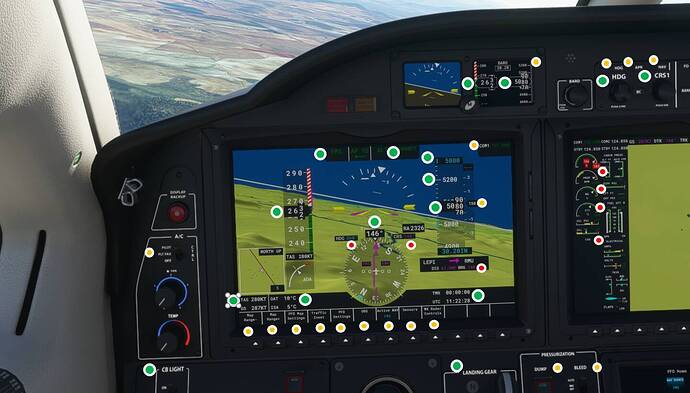@RebuffedBee9595 many thanks for considering my opinion for your choice, which is indeed not an easy one. When it comes to the PC requirements I consider my personal PC config as well-balanced and sufficient to run MSFS in satisfying quality while already being rather costly. Please just be prepared that a PC running MSFS in ultra settings and full native VR-rendered resolution doesn’t exist, yet. You’ll always have to go for a compromise in VR, such as the one proposed in my guide above.
However, even if it’s not perfect yet it’s really worth it. The immersion of actually sitting in the cockpit and flying is not only a breath-taking experience by itself. Due to the full perception of space and movement in space, you actually feel much better how your airplane behaves in space, where it is and where it points towards. Landings feel suddenly much more natural and really easy-going. Once you try VR you’ll never come back to 2D, I’m sure.
Moving on to your headset choice and specifically the point around sharpness and the sweet spot. Unfortunately I don’t have a G2 to compare (yet  ), but according to many reviews and videos I read and watched the G2 features fantastic, crystal-clear and high-contrast displays, which seem to render the best VR image out there - by far.
), but according to many reviews and videos I read and watched the G2 features fantastic, crystal-clear and high-contrast displays, which seem to render the best VR image out there - by far.
Admittedly, both G2’s FOV and specifically its sweet spot seem to be reported as smaller compared to Quest 2. I’m referring here specifically to observations made by users having both the G2 and Q2. I read carefully through @CptLucky8 's sweet spot review and based on both descriptions, I would assess Quest 2 as somewhere between the G2 and Index, but leaning rather a bit towards Index. On Quest 2 and in my case (please bear in mind this is a pretty individual matter), I consider approx. 50-60% of the visible field of view around the center as consistently sharp. Blurriness thereby starts outside of the usual room where we move focus by small eye movements. Summed up, I’m really happy with it. What is comparable to G2 and likely also many other headsets that (when putting on the headset) you have to fit both lenses very accurately to the perfect visual point in order to get this broad sweet spot. All 3 dimensions - including the eye distance to the lenses - really matter here.
Finally, around the sharpness of my settings, I have run a visual test with one of my favorite planes, the TBM930 and its Garmin cockpit. In the screenshot below, I have marked exemplary numbers and labels with little dots, describing as how sharp I perceive them from normal seating position (not leaning in):
- green dot: absolutely clear
- amber dot: still readable, but focusing/reading feels exhausting, tempted to lean in
- red dot: not readable
I hope it helps and all the best on your upcoming VR adventures. It’s quite a bit to learn and some stress to get everything running first, but once done you’ll just love it!
